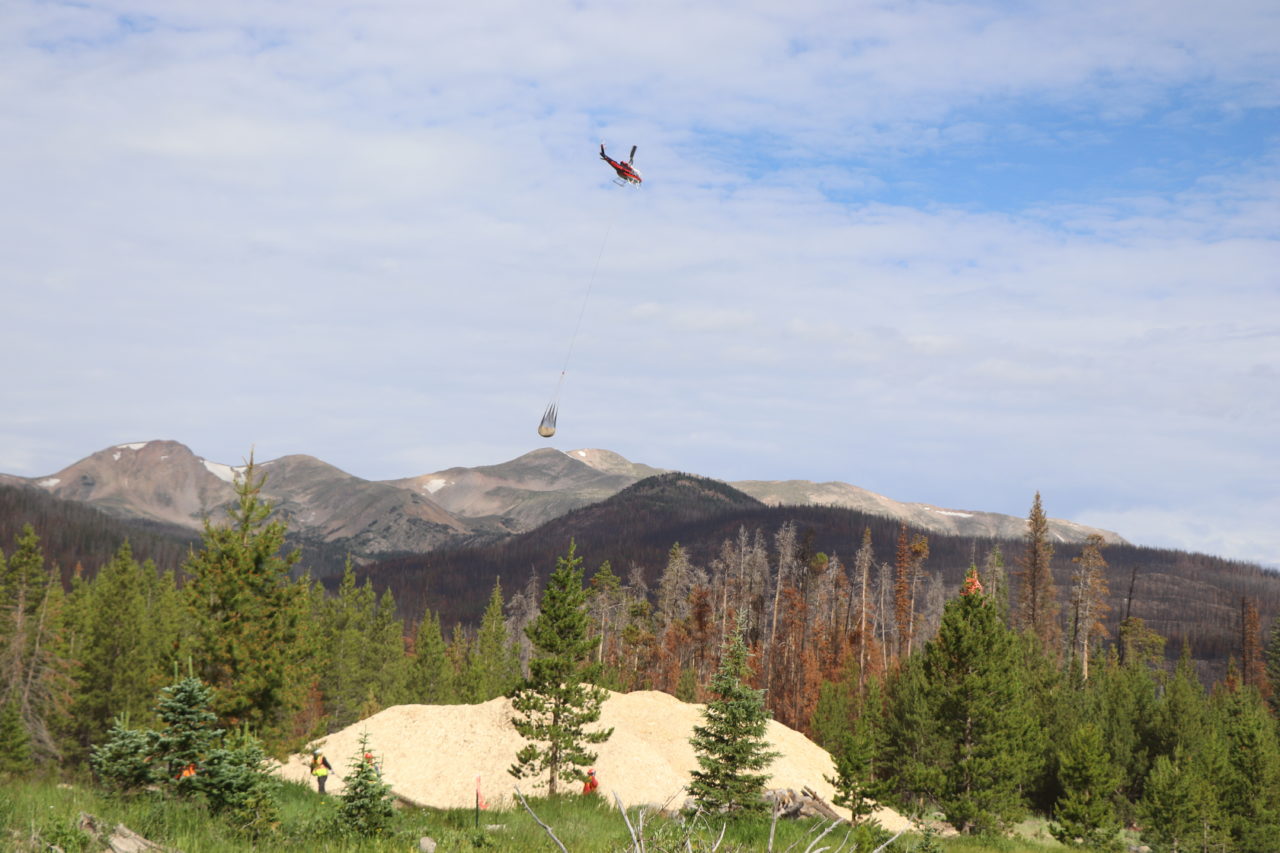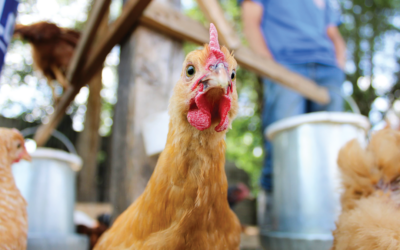On Thursday, July 14, helicopters will take flight to resume aerial mulching operations within the Cameron Peak Fire (CPF) burn area, with 3,500 acres identified for treatment in the Cache la Poudre Watershed and 1,200 acres in the Big Thompson Watershed. Mulching operations will be conducted through the summer and fall of 2022 (weather dependent). Contractors will begin with the Pingree Park area.
In 2021, partners completed 5,050 acres of aerial mulching in these watersheds, making it the largest aerial wood mulch operation in the country. To date, $22 million has been secured for all post-fire work in the Cameron Peak burn area. Last year, approximately $11 million was spent on aerial mulching alone.
The goal of the aerial mulching program is to mitigate the negative consequences of the wildfire to high priority watershed values including water quality and supply, river ecosystem function and health, and to reduce impacts from hillslope erosion to downstream communities in both the Cache la Poudre and Big Thompson watersheds.
“Aerial mulching is really one of the best ways we can treat a large, high severity burn area at the landscape-scale, which is why it has been our main focus over the past two summers,” said Hally Strevey, Executive Director for the Coalition for the Poudre River Watershed (CPRW). “This project would not be possible without the careful coordination, analysis, field work and collaboration between all of the partners over the past two years.”
After the fire, more than 10,000 high priority acres were identified for aerial mulching in the Poudre watershed and 14,000 acres in the Big Thompson watershed on both public and private lands. High priority project areas were selected using science-based information and modeling, as well as collaborative data input from partners of the Larimer Recovery Collaborative. Aerial mulching is part of a larger program of recovery work intended to provide holistic post-fire mitigation in high priority sub-drainages within the CPF burn scar.
The aerial mulching operations are a joint effort between the Coalition for the Poudre River Watershed (CPRW), City of Fort Collins, City of Greeley, City of Loveland, Big Thompson Watershed Coalition (BTWC) and the U.S. Forest Service. Funding for aerial mulching operations is provided by federal, state, municipal and local foundation and donor sources.
Research and monitoring efforts are being led by Colorado State University, the Colorado Forest Restoration Institute and U.S. Forest Service Rocky Mountain Research Station. Landowner engagement and community outreach efforts are being led by the watershed coalitions.
At 208,913 acres, the Cameron Peak Fire (CPF) is the largest wildfire in Colorado’s recorded history. The USFS Burned Area Emergency Response (BAER) report estimated 36% of the Cameron Peak Fire perimeter has high or moderate soil burn severity. The report determined that it was ‘nearly certain (90% – 100%)’ that water quality would be impacted by post fire debris flows, run-off, ash flows, sedimentation and nutrient loading within 1-3 years following the fire.
“In 2021, rainstorms frequently washed ash and sediment from the Cameron Peak Fire burn scar into the Poudre River, causing water quality to degrade significantly. These events often forced the City of Fort Collins to temporarily stop treating Poudre River water and rely entirely on water from Horsetooth Reservoir,” said Jill Oropeza, Director of City of Fort Collins Utilities Water Quality Services. “In some cases, turbidity – a measure of how much material is in the water – exceeded 1000 units, which is 10x the shut-down threshold for water treatment operations, and approximately 200 times the typical pre-fire levels. The time the City had to be off the river can last from a few hours to several days, depending on the severity of the event. Similar effects are already being seen again this year in response to afternoon thunderstorms, highlighting the need for continued mitigation efforts like mulching to slow the erosion process.”
Due to mulching operations, some areas of the Canyon Lakes Ranger District will be closed. Read the closure order and view the closure map at: https://www.fs.usda.gov/alerts/arp/alerts-notices/?aid=60887
For more information about aerial mulching, please contact Shayna Jones, Post-Fire Program Manager with CPRW, at shayna@poudrewatershed.org or visit www.poudrewatershed.org/aerial-mulching






